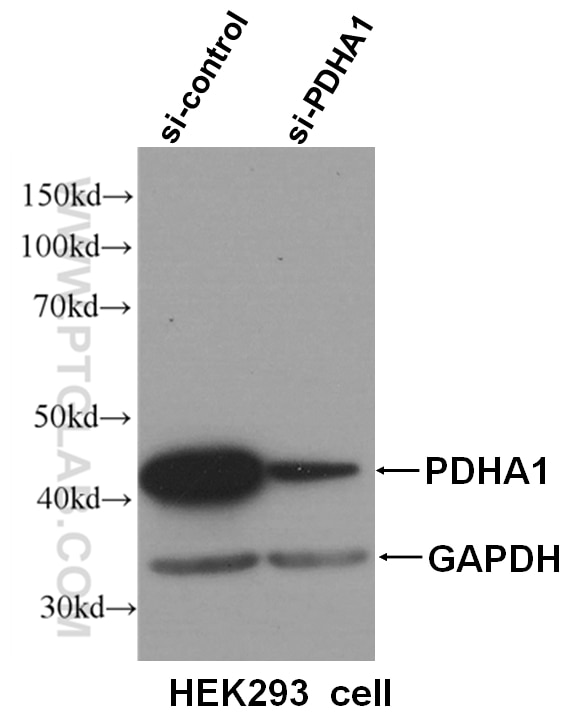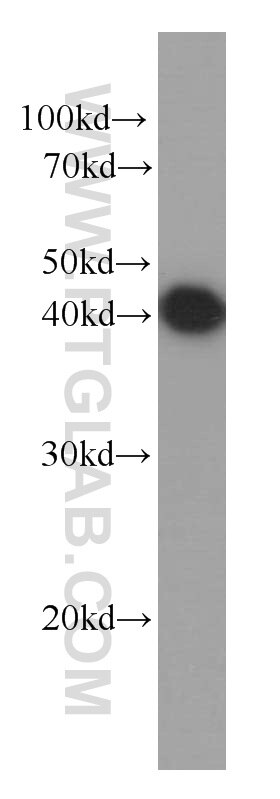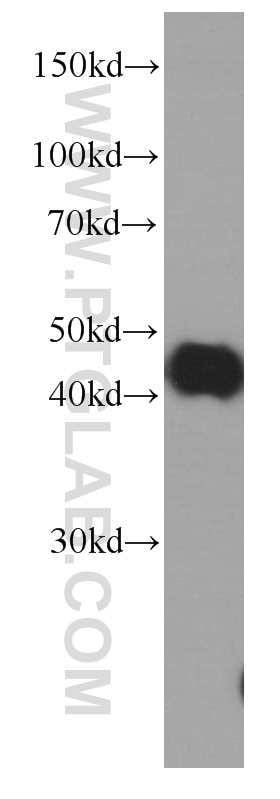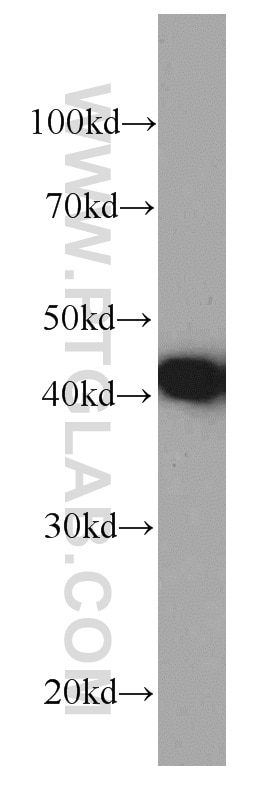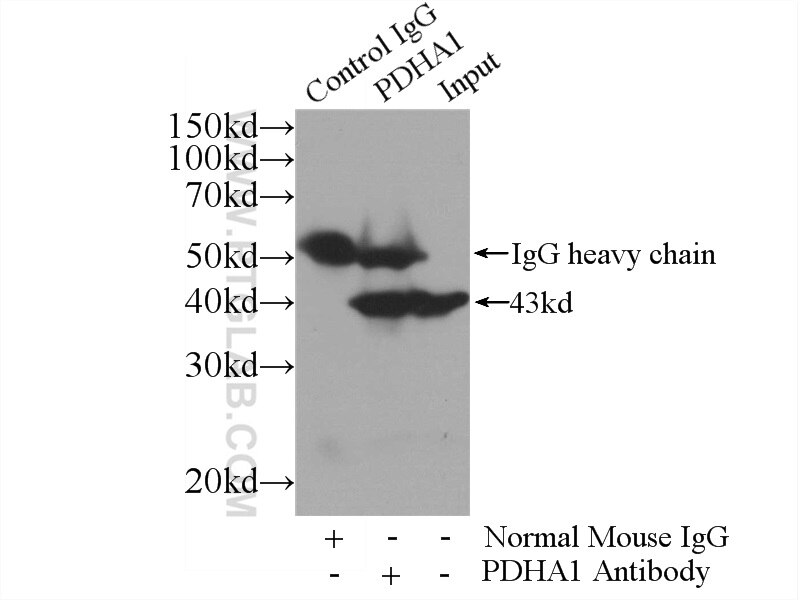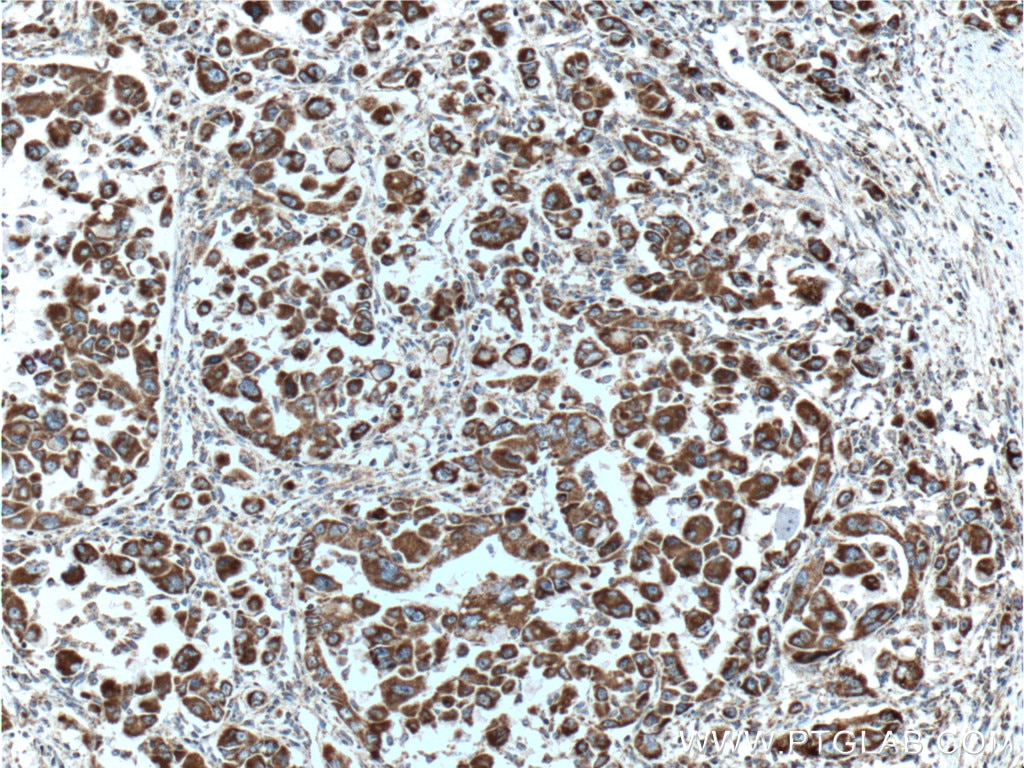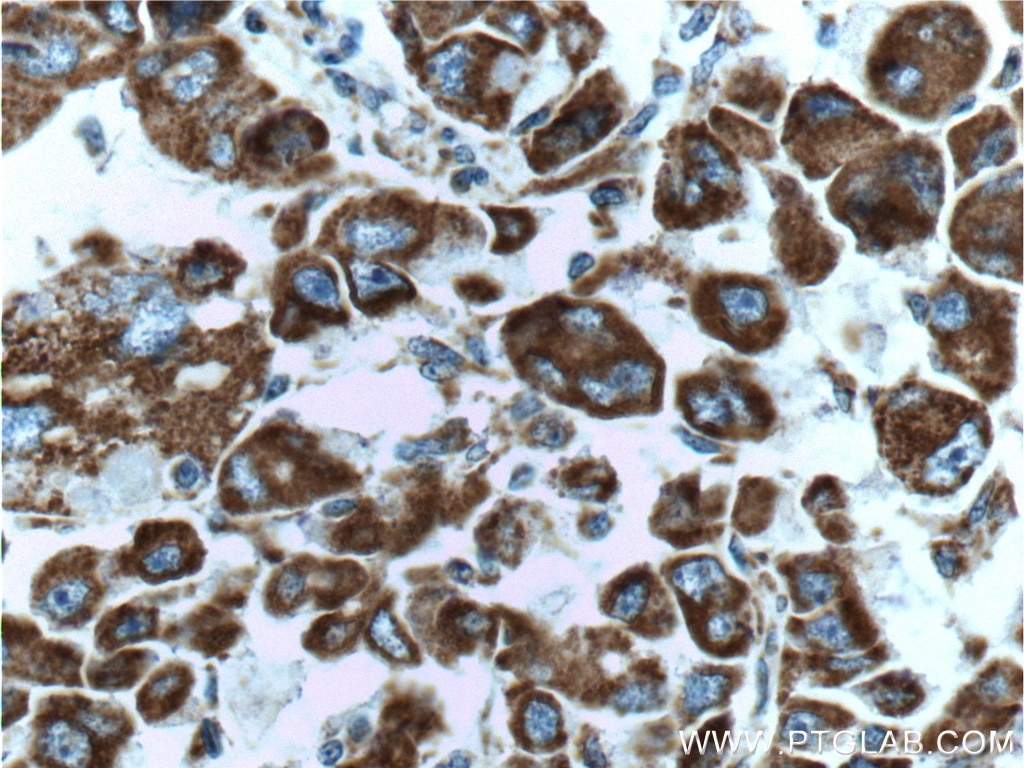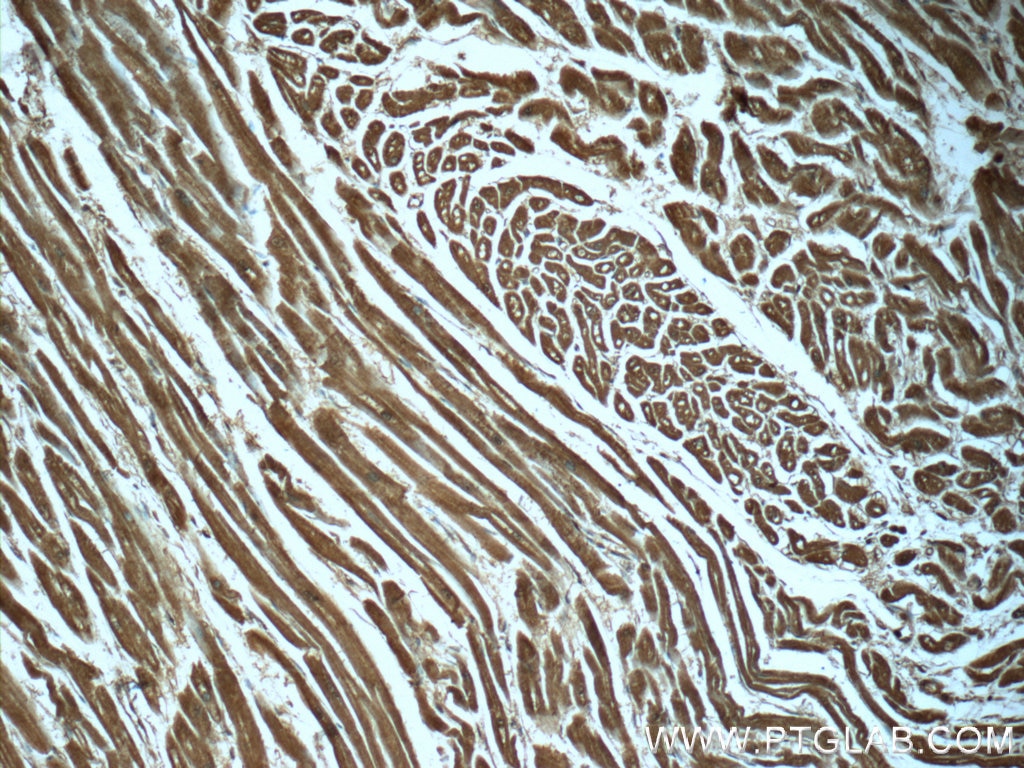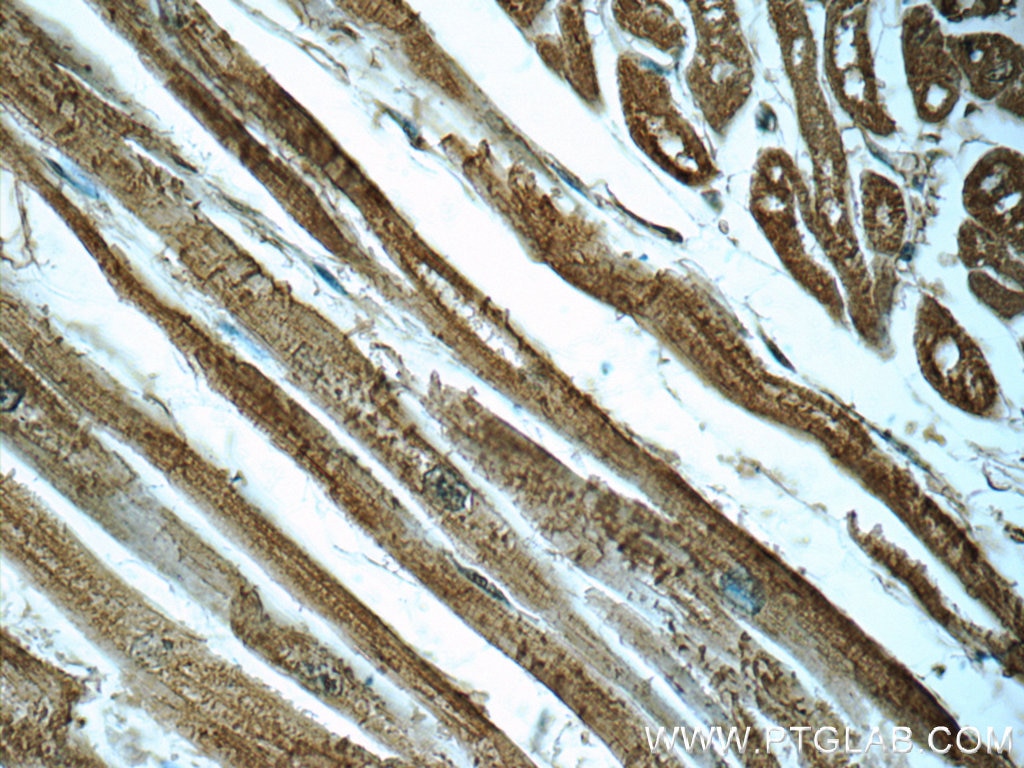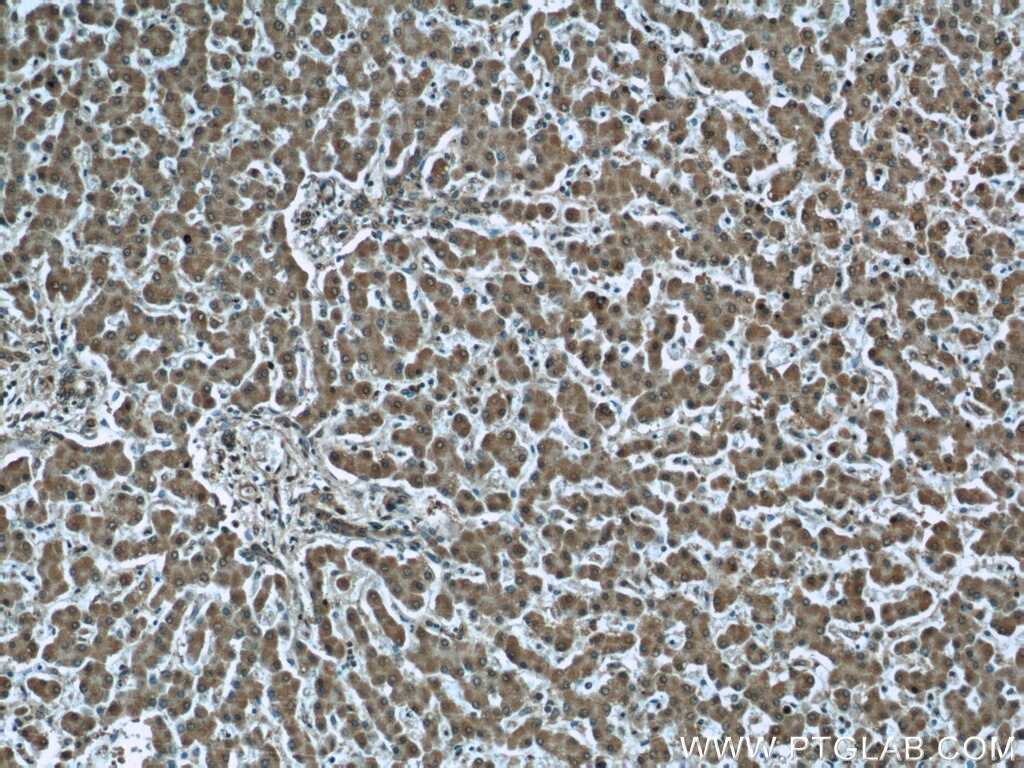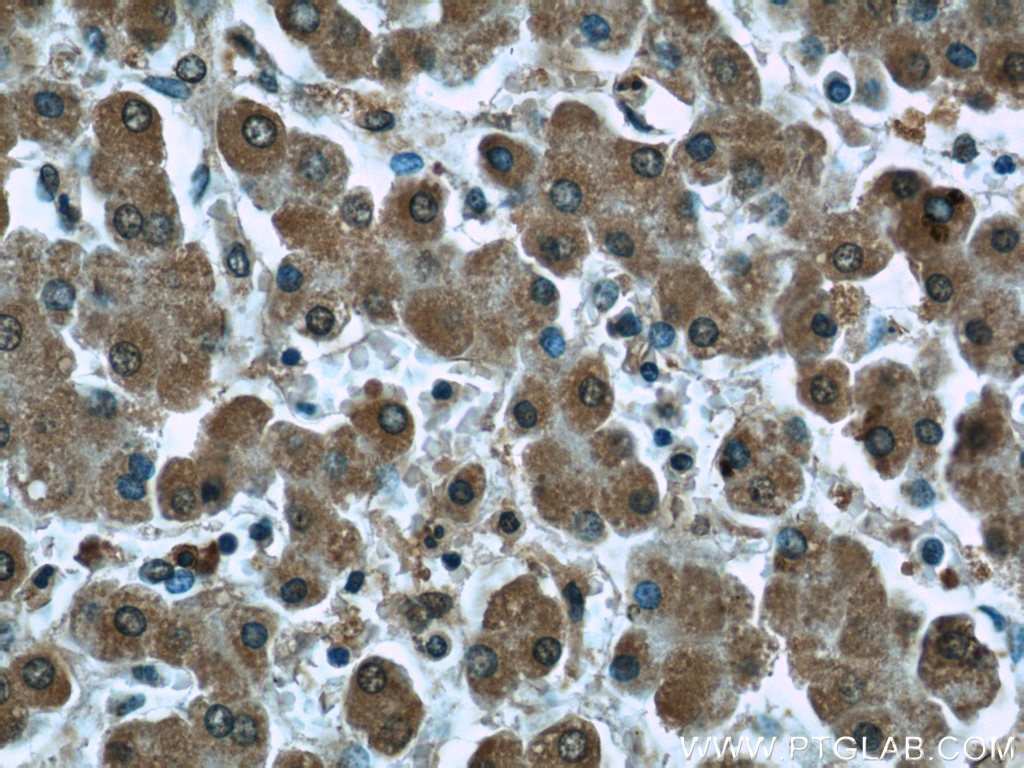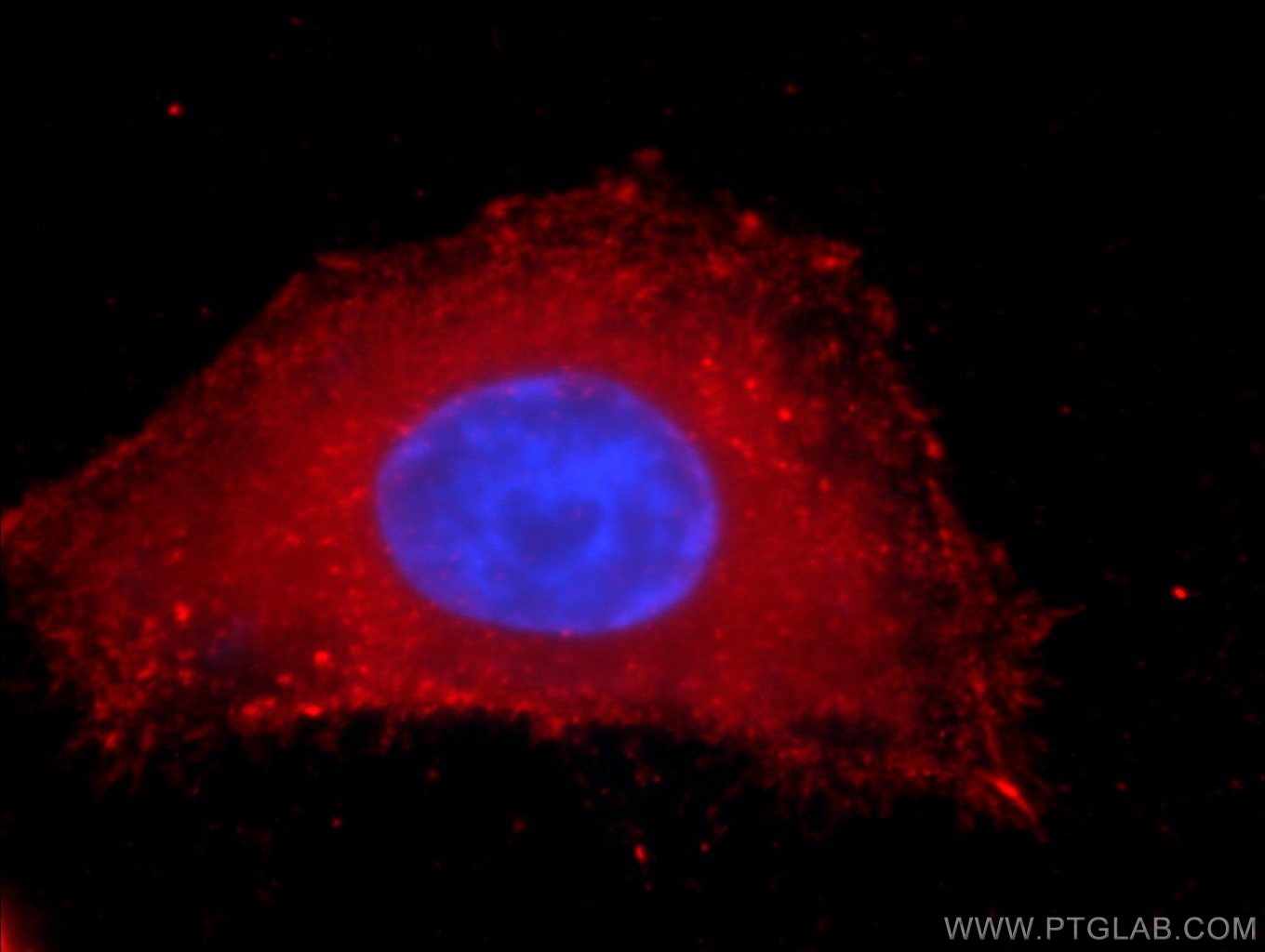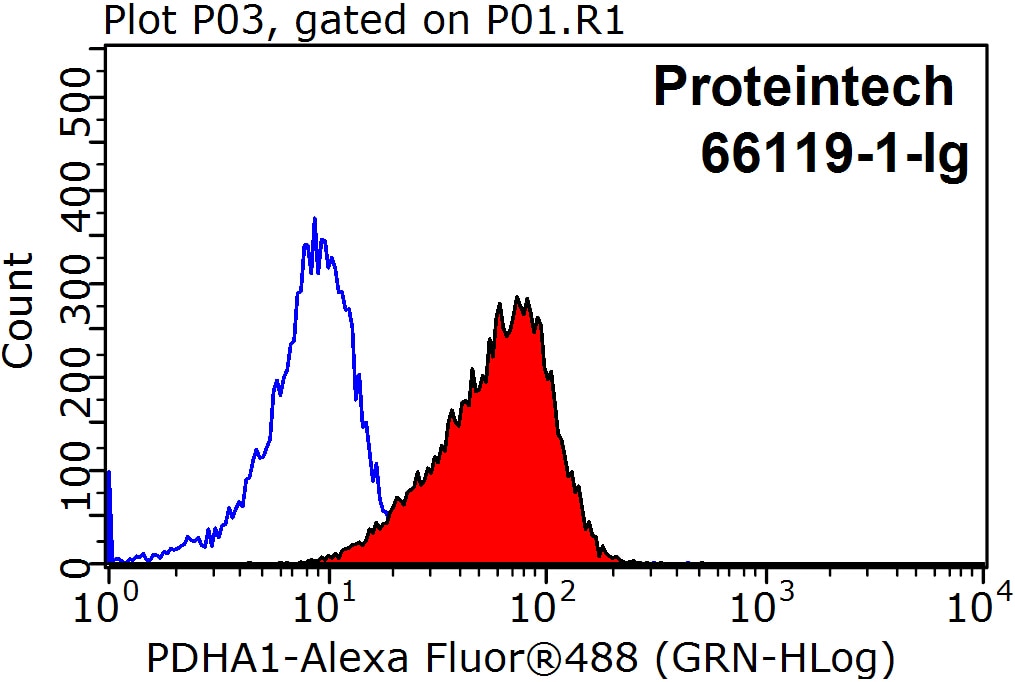- Phare
- Validé par KD/KO
Anticorps Monoclonal anti-PDH E1 Alpha
PDH E1 Alpha Monoclonal Antibody for FC, IF, IHC, IP, WB, ELISA
Hôte / Isotype
Mouse / IgG2a
Réactivité testée
Humain
Applications
WB, IP, IHC, IF, FC, ELISA
Conjugaison
Non conjugué
CloneNo.
2B3C10
N° de cat : 66119-1-Ig
Synonymes
Galerie de données de validation
Applications testées
| Résultats positifs en WB | cellules HEK-293, cellules HEK293 |
| Résultats positifs en IP | cellules HEK-293 |
| Résultats positifs en IHC | tissu de cancer du foie humain, tissu cardiaque humain, tissu hépatique humain il est suggéré de démasquer l'antigène avec un tampon de TE buffer pH 9.0; (*) À défaut, 'le démasquage de l'antigène peut être 'effectué avec un tampon citrate pH 6,0. |
| Résultats positifs en IF | cellules HepG2 |
| Résultats positifs en cytométrie | cellules HepG2 |
Dilution recommandée
| Application | Dilution |
|---|---|
| Western Blot (WB) | WB : 1:5000-1:50000 |
| Immunoprécipitation (IP) | IP : 0.5-4.0 ug for 1.0-3.0 mg of total protein lysate |
| Immunohistochimie (IHC) | IHC : 1:400-1:1600 |
| Immunofluorescence (IF) | IF : 1:20-1:200 |
| Flow Cytometry (FC) | FC : 0.20 ug per 10^6 cells in a 100 µl suspension |
| It is recommended that this reagent should be titrated in each testing system to obtain optimal results. | |
| Sample-dependent, check data in validation data gallery | |
Applications publiées
| KD/KO | See 1 publications below |
| WB | See 7 publications below |
| IF | See 1 publications below |
| IP | See 1 publications below |
Informations sur le produit
66119-1-Ig cible PDH E1 Alpha dans les applications de WB, IP, IHC, IF, FC, ELISA et montre une réactivité avec des échantillons Humain
| Réactivité | Humain |
| Réactivité citée | Humain |
| Hôte / Isotype | Mouse / IgG2a |
| Clonalité | Monoclonal |
| Type | Anticorps |
| Immunogène | PDH E1 Alpha Protéine recombinante Ag12556 |
| Nom complet | pyruvate dehydrogenase (lipoamide) alpha 1 |
| Masse moléculaire calculée | 43 kDa |
| Poids moléculaire observé | 43 kDa |
| Numéro d’acquisition GenBank | BC002406 |
| Symbole du gène | PDHA1 |
| Identification du gène (NCBI) | 5160 |
| Conjugaison | Non conjugué |
| Forme | Liquide |
| Méthode de purification | Purification par protéine A |
| Tampon de stockage | PBS avec azoture de sodium à 0,02 % et glycérol à 50 % pH 7,3 |
| Conditions de stockage | Stocker à -20°C. Stable pendant un an après l'expédition. L'aliquotage n'est pas nécessaire pour le stockage à -20oC Les 20ul contiennent 0,1% de BSA. |
Informations générales
PDHA1(Pyruvate dehydrogenase E1 component subunit alpha, somatic form, mitochondrial) is also named as PHE1A.It is one of the 3 enzymes of the pyruvate dehydrogenase complex which is a nuclear-encoded mitochondrial matrix multienzyme complex that provides the primary link between glycolysis and the tricarboxylic acid (TCA) cycle by catalyzing the irreversible conversion of pyruvate into acetyl-CoA(PMID:7853374).It has 4 isoforms produced by alternative splicing.Defects in PDHA1 are a cause of pyruvate dehydrogenase E1-alpha deficiency (PDHAD) and X-linked Leigh syndrome (X-LS).
Protocole
| Product Specific Protocols | |
|---|---|
| WB protocol for PDH E1 Alpha antibody 66119-1-Ig | Download protocol |
| IHC protocol for PDH E1 Alpha antibody 66119-1-Ig | Download protocol |
| IF protocol for PDH E1 Alpha antibody 66119-1-Ig | Download protocol |
| IP protocol for PDH E1 Alpha antibody 66119-1-Ig | Download protocol |
| Standard Protocols | |
|---|---|
| Click here to view our Standard Protocols |
Publications
| Species | Application | Title |
|---|---|---|
Nat Commun Lin28/let-7 axis regulates aerobic glycolysis and cancer progression via PDK1. | ||
J Cell Biol PINK1 disables the anti-fission machinery to segregate damaged mitochondria for mitophagy. | ||
Cell Rep A LON-ClpP Proteolytic Axis Degrades Complex I to Extinguish ROS Production in Depolarized Mitochondria. | ||
Toxicol Appl Pharmacol Sodium cantharidate induces Apoptosis in breast cancer cells by regulating energy metabolism via the protein phosphatase 5-p53 axis. | ||
Immunobiology The mTOR-glycolytic pathway promotes T-cell immunobiology in oral lichen planus. | ||
Nat Metab MAPK signalling-induced phosphorylation and subcellular translocation of PDHE1α promotes tumour immune evasion.
|
